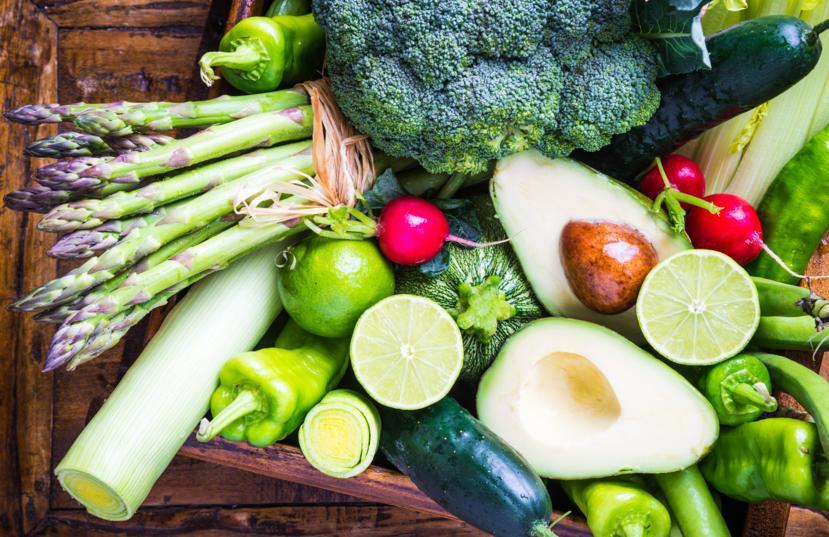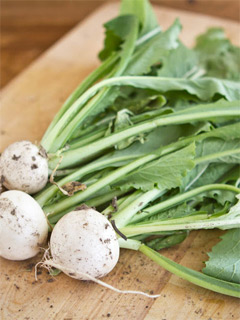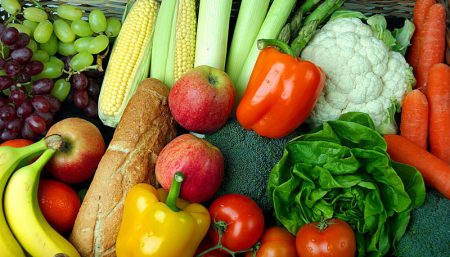

Folic acid, also called folate or folacin, is a Vitamin B-complex holding relevance for all, especially for women in all stages of growth. Three-part of its structure put special demands on the body’s metabolism. The three primary components of folic acid are called PABA, glutamic acid, and pteridine.
Talking about its role, Folic is responsible for complete development of red blood cells and maintain healthy circulation of the blood throughout the body by preventing build-up of a substance called homocysteine (a potentially harmful product of cellular metabolism). Folate, is an important nutrient for a healthy pregnancy.
Some excellent sources of folate include:
![]()
Romaine Lettuce: This is a variety of lettuce which grows in a tall head of sturdy leaves with firm ribs down their centers. Romaine lettuce contains 136ug of folate per serving. In one of the studies, Folic acid compounds in romaine lettuce (http://www.ncbi.nlm.nih.gov/
![]()
Spinach: It is a rich source of folic acid, which decreases the risk for neural tube defects such as birth defects of the brain and spina bifida. 1 cup of spinach contains 263 mcg of folate (65% DV). Try cooked spinach and sandwiches with spinach or add a few bright jade colored leaves to your favorite soups and stews.
![]()
Asparagus: This is perhaps one of the most nutrient dense foods with folic acid out of the entire vegetable kingdom. Eating just one cup of boiled asparagus will give you 262 mcg of folic acid, which accounts for approximately 65% of your daily needs.
![]()
 Turnip Greens: Folate is a critical B-vitamin for support of cardiovascular health, including its key role in prevention of homocysteine build-up (called hyperhomocysteinemia). These greens provide 575 micrograms of folate in every hundred calories. Serve healthy sautéed turnip greens seasoned with some soy sauce, lemon juice and cayenne pepper.
Turnip Greens: Folate is a critical B-vitamin for support of cardiovascular health, including its key role in prevention of homocysteine build-up (called hyperhomocysteinemia). These greens provide 575 micrograms of folate in every hundred calories. Serve healthy sautéed turnip greens seasoned with some soy sauce, lemon juice and cayenne pepper.
![]()
Parsley: You may see parsley mostly as a garnish or as a seasoning for soups, salads and entrees, but it’s nutritious as well. The folic acid in parsley is a critical nutrient in cardiovascular health. Due to the presence of large amount of folic acid, the use of parsley stimulate fertility, the production of estrogen in women, relieving symptoms of PMS or menopause and improving circulation to the uterus.
![]()
Collard Greens: A 1-cup serving of cooked collard greens contains 177 micrograms. Add chopped collard greens to a pot of vegetable, minestrone, tomato or split pea soup to add flavor and essential nutrients. Stir collard greens into spaghetti sauce, or add the greens to your favorite lasagna recipe. Saute collard greens with yellow onions and fresh garlic for a flavorful side dish rich in vitamins and minerals.
![]()
Broccoli: It is a great source for folic acid. Just one cup of broccoli will provide you with approximately 24% of your daily folic acid needs, not to mention a whole host of other important nutrients. We recommend eating organic broccoli raw or lightly steamed.
![]()

Cauliflower: Eating just one cup of cauliflower will give you approximately 55 mcg of folate, accounting for 14% of your recommended daily value. Add fresh cauliflower to a salad with some of the other folic acid foods on this list.
![]()
Beets: They are known as one of the best food source of folic acid (vitamin B9). Eating one cup of boiled beets will provide you with approximately 136 mcg of folate, accounting for 34% of your daily needs.
![]()
Lentils: A small bowl of any type of lentils will give you the majority of your recommended daily amounts of folate.
Adults need 400 micrograms (mcg) of dietary folate equivalents (DFEs)* each day. It is important to eat foods that contain folate every day. To get enough folate, take a daily supplement with 400 mcg of folic acid. Make sure your supplement also contains vitamin B12. Do not take more than 1000 micrograms (1 milligram) each day unless advised by your doctor.
*Folate in foods is not absorbed as well as folic acid from supplements or fortified food. Dietary folate equivalents (DFEs) adjust for these differences. This means that 1 mcg of DFE = 1 mcg of food folate or 0.6 mcg of folic acid from fortified food or as a supplement taken with meals.
Click here, for other Vitamin B9 (Folate) rich foods.
Disclaimer
The Content is not intended to be a substitute for professional medical advice, diagnosis, or treatment. Always seek the advice of your physician or other qualified health provider with any questions you may have regarding a medical condition.



